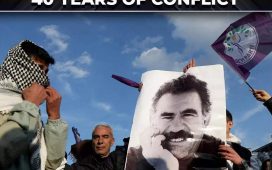
“Military activities in this area, this densely populated area, would be, of course, an unfathomable catastrophe… and would even further expand the humanitarian disaster beyond imagination,” said Richard Peeperkorn, WHO representative for Gaza and the West Bank.
More than one million Palestinians crammed into Rafah at the southern tip of the Gaza Strip, on the border with Egypt, where many are living in tent camps and makeshift shelters after fleeing Israeli bombardments elsewhere in Gaza.
The Israeli military says it wants to flush out Islamist militants from hideouts in Rafah and free hostages being held there after the Hamas rampage in Israel on Oct. 7, but has given no details of a proposed plan to evacuate civilians.
The United Nations said that an Israeli offensive there could “lead to a slaughter.”
“It will also increase the burden on a completely overburdened… health system on its knees and increase the trauma burden and it would push the health system closer to the brink of collapse,” Peeperkorn said. Peeperkorn said WHO’s ability to distribute medical aid to Gaza was limited because many of its requests to deliver supplies had been denied. He said that only 40% of WHO’s missions to northern Gaza had been authorised from November, and that this figure had dropped significantly since January.
“All of these missions have been denied, impeded, or postponed,” he said, adding it was “absurd” that only 45% of WHO’s mission requests for southern Gaza had been granted.
Israel has previously denied blocking the entry of aid.
“Even when there is no ceasefire, humanitarian corridors should exist so that WHO, the U.N. can do their job,” Peeperkorn said.
(You can now subscribe to our Economic Times WhatsApp channel)










